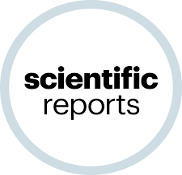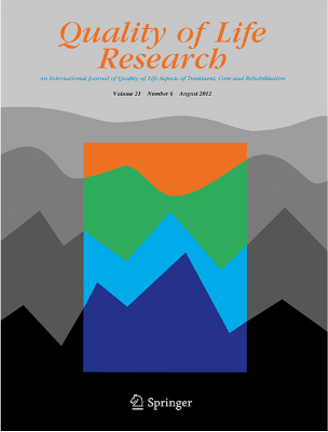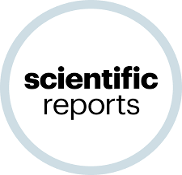The severity of the symptoms associated with COVID-19 is highly variable, and has been associated with circulating amino acids as a group of analytes in metabolomic studies. However, for each individual amino acid, there are discordant results among studies. The aims of the present study were: (i) to investigate the association between COVID-19-symptom severity and circulating aminoacid concentrations; and (ii) to assess the ability of circulating amino-acid levels to predict adverse outcomes (intensive-care-unit admission or hospital death). We studied a sample of 736 participants from the Biobanque Québécoise COVID-19. All participants tested positive for COVID-19, and the severity of symptoms was determined using the World-Health-Organization criteria. Circulating amino acids were measured by HPLC-MS/MS. We used logistic models to assess the association between circulating amino acids concentrations and the odds of presenting mild vs. severe or mild vs. moderate symptoms, as well as their accuracy in predicting adverse outcomes. Patients with severe COVID-19 symptoms were older on average, and they had a higher prevalence of obesity and type 2 diabetes. Out of 20 amino acids tested, 16 were significantly associated with disease severity, with phenylalanine (positively) and cysteine (inversely) showing the strongest associations. These associations remained significant after adjustment for age, sex and body mass index. Phenylalanine had a fair ability to predict the occurrence of adverse outcomes, similar to traditionally measured laboratory variables. A multivariate model including both circulating amino acids and clinical variables had a 90% accuracy at predicting adverse outcomes in this sample. In conclusion, patients presenting severe COVID-19 symptoms have an altered amino-acid profile, compared to those with mild or moderate symptoms.
Publications


Severely‑afflicted COVID‑19 patients can exhibit disease manifestations representative of sepsis, including acute respiratory distress syndrome and multiple organ failure. We hypothesized that diagnostic tools used in managing all‑cause sepsis, such as clinical criteria, biomarkers, and gene expression signatures, should extend to COVID‑19 patients. Here we analyzed the whole blood transcriptome of 124 early (1–5 days post‑hospital admission) and late (6–20 days post‑admission) sampled patients with confirmed COVID‑19 infections from hospitals in Quebec, Canada. Mechanisms associated with COVID‑19 severity were identified between severity groups (ranging from mild disease to the requirement for mechanical ventilation and mortality), and established sepsis signatures were assessed for dysregulation. Specifically, gene expression signatures representing pathophysiological events, namely cellular reprogramming, organ dysfunction, and mortality, were significantly enriched and predictive of severity and lethality in COVID‑19 patients. Mechanistic endotypes reflective of distinct sepsis aetiologies and therapeutic opportunities were also identified in subsets of patients, enabling prediction of potentially‑effective repurposed drugs. The expression of sepsis gene expression signatures in severely‑afflicted COVID‑19 patients indicates that these patients should be classified as having severe sepsis. Accordingly, in severe COVID‑19 patients, these signatures should be strongly considered for the mechanistic characterization, diagnosis, and guidance of treatment using repurposed drugs.

The outbreak of the COVID-19 pandemic caused catastrophic socioeconomic consequences and fundamentally reshaped the lives of billions across the globe. Our current understanding of the relationships between clinical variables (demographics, symptoms, follow-up symptoms, comorbidities, treatments, lab results, complications, and other clinical measurements) and COVID-19 outcomes remains obscure. Various computational approaches have been employed to elucidate the relationships between different COVID-19 clinical variables and their contributions to the disease outcomes. However, it is often challenging to capture the indirect relationships, as well as the direction of those relationships, with the conventional pairwise correlation methods. Graphical models (e.g., Bayesian networks) can address these limitations but are computationally expensive, which substantially limits their applications in reconstructing relationship networks of umpteen clinical variables. In this study, we have developed a method named RAMEN, which employs Genetic Algorithm and random walks to infer the Bayesian relationship network between clinical variables. We applied RAMEN to a comprehensive COVID-19 dataset, Biobanque Québécoise de la COVID-19 (BQC19). Most of the clinical variables in our reconstructed Bayesian network associated with COVID-19 severity, or long COVID, are supported by existing literature. We further computationally verified the effectiveness of the RAMEN method with statistical examinations of the multi-omics measurements (Clinical variables, RNA-seq, and Somascan) of the BQC19 data and simulations. The accurate inference of the relationships between clinical variables and disease outcomes powered by RAMEN will significantly advance the development of effective and early diagnostics of severe COVID-19 and long COVID, which can help save millions of lives.

Obesity is a major risk factor for Coronavirus disease (COVID-19) severity; however, the mechanisms underlying this relationship are not fully understood. As obesity influences the plasma proteome, we sought to identify circulating proteins mediating the effects of obesity on COVID-19 severity in humans. Here, we screened 4,907 plasma proteins to identify proteins influenced by body mass index using Mendelian randomization. This yielded 1,216 proteins, whose effect on COVID-19 severity was assessed, again using Mendelian randomization. We found that an s.d. increase in nephronectin (NPNT) was associated with increased odds of critically ill COVID-19 (OR = 1.71, P = 1.63 × 10-10). The effect was driven by an NPNT splice isoform. Mediation analyses supported NPNT as a mediator. In single-cell RNA-sequencing, NPNT was expressed in alveolar cells and fibroblasts of the lung in individuals who died of COVID-19. Finally, decreasing body fat mass and increasing fat-free mass were found to lower NPNT levels. These findings provide actionable insights into how obesity influences COVID-19 severity.

This single-centre prospective observational study conducted in Quebec, Canada, from December 2021 to April 2022 assessed the prevalence and risk factors of persistent post-COVID-19 symptoms associated with the Omicron variant in PCR-confirmed adult cases enrolled in the Quebec COVID-19 Biobank (BQC19). Among 290 participants followed at a median of 44 days post-infection, 47.2% reported ongoing symptoms, mainly fatigue (48.2%), shortness of breath (32.6%), and cough (24.1%), despite 98.6% having experienced mild initial illness. The number of symptoms during the acute phase was a significant risk factor for persistent symptoms (OR 1.07; 95% CI 1.03–1.10; p = 0.009). As the first study reporting post-COVID-19 symptom prevalence related to Omicron in Canada, these findings have important implications for provincial healthcare service planning.

This prospective cohort study investigated post-COVID-19 conditions (PCC) following Delta variant infection among fully vaccinated and unvaccinated adults enrolled in the Biobanque Québécoise de la COVID-19 between August and November 2021. Of 138 participants (62.8% vaccinated with breakthrough infections, 37.1% unvaccinated), most experienced mild acute illness (93.5%). The prevalence of PCC was comparable between vaccinated (61.4%) and unvaccinated groups (51.4%; p = 0.347). Importantly, the number of acute symptoms predicted PCC risk independently of vaccination status. These findings indicate that full vaccination did not reduce the incidence of PCC after Delta variant infection, highlighting the need for alternative prevention strategies and informing healthcare planning for post-COVID care.

A circulating proteome-informed prognostic model of COVID-19 disease activity that relies on routinely available clinical laboratories.
A minority of people infected with SARS-CoV-2 will develop severe COVID-19 disease. To help predict who is more likely to require admission to ICU, we conducted an unsupervised stratification of the circulating proteome that identified six endophenotypes (EPs) among 731 SARS-CoV-2 PCR-positive hospitalized participants in the Biobanque Québécoise de la COVID-19, with varying degrees of disease severity and times to intensive care unit (ICU) admission. One endophenotype, EP6, was associated with a greater proportion of ICU admission, ventilation support, acute respiratory distress syndrome (ARDS) and death. Clinical features of EP6 included increased levels of C-reactive protein, D-dimers, interleukin-6, ferritin, soluble fms-like tyrosine kinase-1, elevated neutrophils, and depleted lymphocytes, whereas another endophenotype (EP5) was associated with cardiovascular complications, congruent with elevated blood biomarkers of cardiovascular disease like N-terminal pro B-type natriuretic peptide (NT-proBNP), Growth Differentiation Factor-15 (GDF-15), and Troponin T. Importantly, a prognostic model solely based on clinical laboratory measurements was developed and validated on 903 patients that generalizes the EPs to new patients recruited across all pandemic waves (2020-2022) and create new opportunities for automated identification of high-risk groups in the clinic. Thus, this novel way to address pathogenesis that leverages detailed phenotypic information but relies on routinely available information in the clinic to favor translation may find applications in other diseases beyond COVID-19.

Systemic inflammation in critically ill patients can lead to serious consequences such as acute respiratory distress syndrome (ARDS), a condition characterized by the presence of lung inflammation, edema, and impaired gas exchange, associated with poor survival. Understanding molecular pathobiology is essential to improve critical care of these patients. To this end, we use multimodal profiles of SARS-CoV-2 infected hospitalized participants to the Biobanque Québécoise de la COVID-19 (BQC-19) to characterize endophenotypes associated with different degrees of disease severity. Proteomic, metabolomic, and genomic characterization supported a role for neutrophil-associated procoagulant activity in severe COVID-19 ARDS that is inversely correlated with sphinghosine-1 phosphate plasma levels. Fibroblast Growth Factor Receptor (FGFR) and SH2-containing transforming protein 4 (SHC4) signaling were identified as molecular features associated with endophenotype 6 (EP6). Mechanical ventilation in EP6 was associated with alterations in lipoprotein metabolism. These findings help define the molecular mechanisms related to specific severe outcomes, that can be used to identify early unfavorable clinical trajectories and treatable traits to improve the survival of critically ill patients.

This study analyzed health-related quality of life (HRQOL) trajectories over 18 months in 2,163 adults diagnosed with COVID-19 from the BQC-19 cohort. Using the EQ-5D-5L scale and latent class mixed models, distinct HRQOL decline patterns were identified: 13% of outpatients and 28% of inpatients experienced significant declines. Key predictors of HRQOL decline across all patients included older age, female sex, greater disease severity, and fatigue at initial assessment. Functional capacity scores (SARC-F and Clinical Frailty Scale) also predicted decline likelihood. These findings suggest that similar factors influence HRQOL deterioration regardless of hospitalization status, and that early clinical functional assessments may help identify patients at risk for long-term quality of life impairment post-COVID-19.

Circulating proteins to predict COVID-19 severity.
This study measured 4,701 circulating proteins in two independent cohorts totaling 986 individuals to predict COVID-19 severity. Using protein abundances combined with clinical factors, prediction models were trained on 417 subjects and tested on 569 others. A baseline model with age and sex achieved 65% AUC, while incorporating 92 selected proteins improved prediction accuracy to 88% in training and 86% in testing cohorts, indicating strong generalizability. Although many selected proteins related to cytokine pathways, over half of enriched pathways were non-immune, suggesting diverse biological processes influence severity. These results highlight the potential of early plasma protein profiling as a reasonably accurate predictor of COVID-19 severity, warranting further research for clinical application.